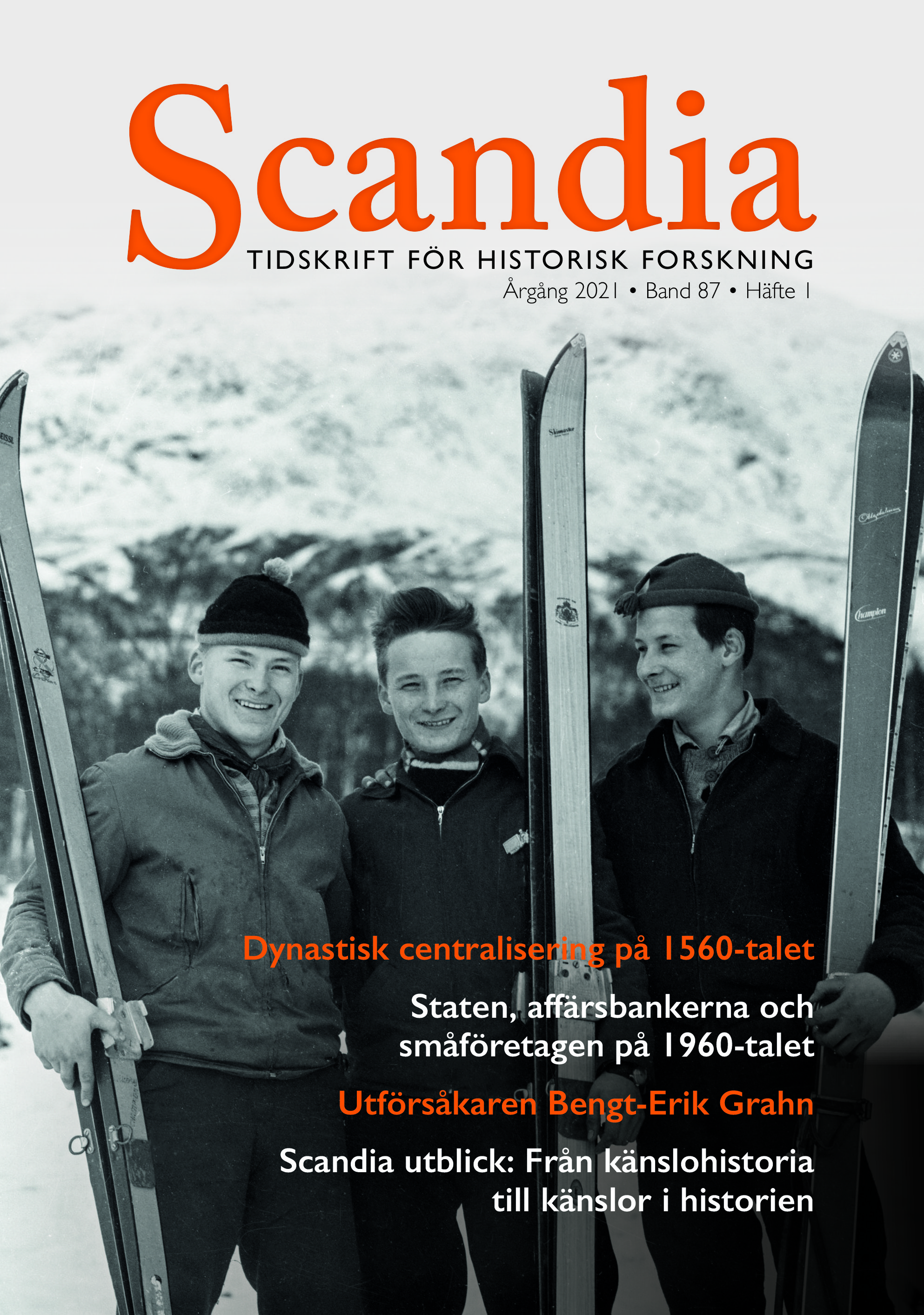Den egensinnige från Kittelfjäll
En biografisk studie om utförsåkaren Bengt-Erik Grahn
DOI:
https://doi.org/10.47868/scandia.v87i1.23253Nyckelord:
Sámi historia, muntlig historia, idrottshistoria, alpin skidåkning, etnicitetAbstract
This article is a sports biography of Bengt-Erik Grahn, a prominent figure in Swedish alpine skiing during the 1960s. By discussing representations of Bengt-Erik Grahn in the Swedish daily press and comparing these with his own life story and memories from his time as an elite alpine skier, the objective is to study the cultural identities that appear in relation to his sports career. Bengt-Erik Grahn grew up in a Sámi family in Kittelfjäll in the Swedish province of Västerbotten and spent his early school years at the Sámi nomad school in Tärnaby. Due to his Sámi background and position as a representative of the Swedish national alpine team, the article focuses in particular on how identity constructs such as “Swedishness” and “Sáminess” appear in the source material. For instance, it is argued that his Sámi identity served an important function when Bengt-Erik Grahn was depicted as a Swedish sports hero. In addition, his Sámi background, meager way of life, odd sporting outfit (a hand-knitted wool sweater and hat) and profession as a forestry worker were all characteristics presented in the press coverage as distinguishing the Swedish sporting identity of amateurism from what was perceived as a jet-set and playboy mentality represented by the professional Continental European alpine skiers. However, simultaneously with this idealization, Bengt-Erik Grahn’s Sámi heritage was also used as a stereotype to explain his aggressive and risky tactics, which often resulted in crashes in the most important competitions. Bengt-Erik Grahn’s own life story in several ways offers nuance to the perceptions of the daily press.
In particular, it reveals the challenges facing Bengt-Erik Grahn in his youth as he chose to focus on a career in alpine skiing. For example, there were strong expectations that a Sámi skier should devote him- or herself to cross-country skiing, which was considered a traditional Sámi sport at the time. Alpine skiing, on the other hand, was perceived as modern and alien to Sámi sports culture. In that way, Bengt-Erik Grahn’s odd and independent way of skiing appears in his life story as a demonstration of empowerment. Despite the prevailing culture, he chose the sport and how to perform it entirely on his own.






